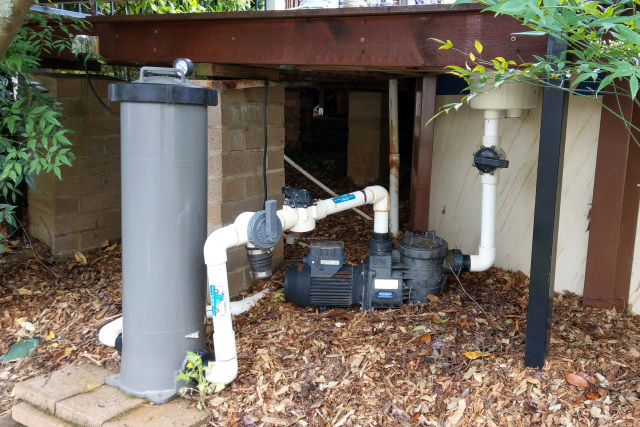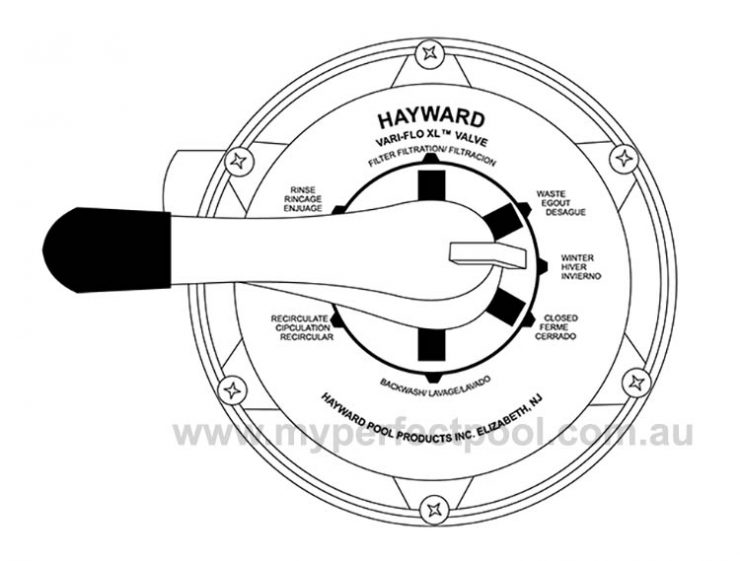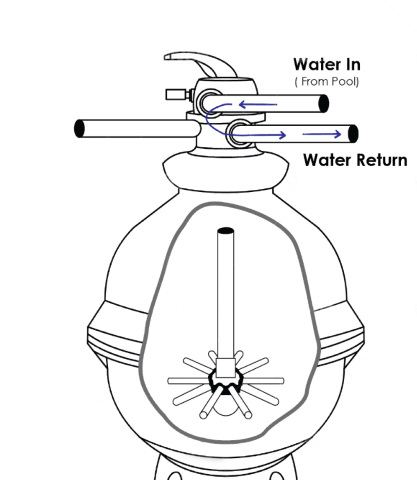An often overlooked aspect for many pool owners is how long to run your pool filter after shocking your pool. It is a question a lot of pool owners have and a question that we have the answer to!
A pool filter should be run for a minimum of 6 hours after shocking a swimming pool. This is to allow the filter to clean the water and give the shock enough time to fully mix with the pool water. Running the filter after shocking for 24 hours to 7 days is necessary if the pool has a large amount of algae.
Keep reading to find out why running your pool filter is so important after shocking, and how certain situations can change how long you will need to keep your filter running after shocking your pool.

Article Contents
Why Run Pool Filter After Shocking
Running your pool filter and pump after shocking is an essential step in keeping your pool looking great.
The pump and filter need to be run for two reasons:
- Circulate and distribute the pool shock
- Clean and filter the pool’s water
Allowing a minimum of 6 hours will take care of the circulation of the shock and should distribute it evenly throughout the pool.
If you’re looking for pool shock, check out this one here:
- Powerful chlorine (68% calcium hypochlorite)
- Use as a shock or as regular chlorine for pools & spas to clear cloudy water
- Kills algae, bacteria and removes contaminants
The cleaning and filtering of the water has a variable time and will depend on how dirty or how much algae your pool has.
But first…
What if the Pump Isn’t Run Long Enough?
Here’s what happens if you don’t run your pump long enough after shocking:
- The shock will not mix properly with all the water
- Cloudy or milky pool water
- Green pool (if you have algae)
- Increase chances of recurring algae
Failing to properly run your pool filter after shocking will result in the added chlorine not being able to circulate around your pool.
When the chlorine cannot circulate around the pool, it cannot do its job. If the chlorine isn’t circulated, it won’t be able to disinfect all the water and your pool may remain cloudy or full of bacteria.
In addition, chlorine that sits for too long in one area could result in staining of your pool surfaces, and nobody wants that.
If you don’t properly run your pool filter after shocking, not only could staining and failure to sanitize occur, the dead algae and other bacteria and debris won’t be filtered out of your water.
Anything that is in the pool when shocked will remain in the pool until it is filtered out and fully sanitized. And if it isn’t filtered out you will have a cloudy pool and potential food for bacteria and algae.
Related Reading: How Much Are Pool Pump Running Costs? (Cost Calculator)
How to Know How Long to Run Your Pool Pump After Shocking?
The time you run your pool filter and pump after shocking depends mostly on the level of algae or dirtiness of the pool’s water. The dirtier the pool, the longer you’ll need to run the filter for.
Filtering for long enough plays a major role in getting your pool water clear. The chemical balance is just as important.
The best way to know if you’ve run the filter long enough is to keep an eye on the pool to see how the water is looking. It will start looking clear again when you have filtered it sufficiently.
To give you a guide though, check out this chart.
| Algae Color | Filter Run Time After Shocking |
| Light Green | 24-48 hours |
| Dark Green | Several Days (24 hrs per day) |
| Black Green | Up to a week (24 hrs per day) |
Which Filter Setting to Use After Shocking
Now you know how long to run your filter for, you should also know which filter setting to use after shocking your pool.
The Filter setting is the best setting or filter position to use after shocking your pool. You may also use the Recirculate setting on your filter.

The Filter setting is the filter position you normally use every day. When shocking and running on Filter, algae or debris in the water will pass through the filter and get caught. As a result, you may need to clean your pool filter every day or so, particularly if you have a lot of algae.
For extra clear water, you may later choose to use a clarifier after you’ve finished the shock treatment. Clarifier will clump together small particles, which makes them easier to filter resulting in clear water.
Should You Use “Recirculate” Filter Setting After Shocking?
You could also run your filter on Recirculate. Doing this bypasses your filter and will quickly and efficiently circulate the chlorine throughout the entire pool.
Recirculate is great to use when there are large amounts of debris or algae that could clog your filter quickly if they are passed through. Recirculate will allow the shock to mix quickly and start working.
Be aware when using the Recirculate setting, the pool won’t be filtering out debris and algae, so it will remain in the water and on the bottom of your pool until you filter or backwash it away.

So really, only use this setting to circulate and thoroughly mix the pool shock (about 6 hours). Then switch to the filter position to filter out the debris and start clearing up the pool water.
Should You Clean the Filter or Backwash After Shocking?
You may need to clean your pool filter or backwash if there is algae or your pool is particularly dirty.
After shocking it is a good idea to brush the sides of the pool and vacuum as much algae and debris as you can.
When vacuuming your pool, vacuuming should be done to waste to not allow the dirt and algae to sit in your filter. Sometimes this isn’t possible or it is simply hard to get all of it to waste.
A high quality clarifier can be used to make particles larger and easier for the filter to handle.
Check out this clarifier here:
- Effectively clears up cloudy water, leaving it crystal clear
- Compatible with all pool types including saltwater & spas
- Improves filter efficiency, removes debris, dead algae, dirt & doesn't impact pH levels
Once the algae and debris are all gone after brushing and vacuuming, you should clean or backwash your filter to get it running at ideal performance.
Related Reading: Filter Pressure Rises Rapidly After Backwash or Cleaning
Why You Should Shock Your Pool
Pools get a lot of use during peak times of the year, and along with swimmers comes contaminants.
When a steady flow of swimmers is coming through your pool, sweat, sunscreen, and bacteria become present. Shocking is an important step in removing these from your pool.
In addition to bacteria from swimmers, environmental factors such as rain and debris can cause bacteria and algae growth within your pool that will need to be removed by shocking.
How to Shock Your Pool
Shocking your pool is simple and can be accomplished rather quickly.
When shocking your pool, you should first mix your shock into a bucket of water to dissolve it.
Once dissolved, pour the shock into your pool as you walk around the perimeter. Make sure to evenly distribute the shock the best you can.
If algae is present in your pool, it will turn gray or white when the chlorine has done its job. If the algae is still present after 48 hours, you can shock again.
For a full guide on shocking your pool, check out our article:
How To Shock A Swimming Pool For Beginners (In 6 Easy Steps)
Final Thoughts
Running your filter after shocking your pool is a must and is just as important to your pool as shocking it is.
Be sure to run your filter for at least 6 hours, but shoot for 24 hours to several days, if your pool is particularly dirty or has algae, to properly circulate the chlorine and clean the water.



